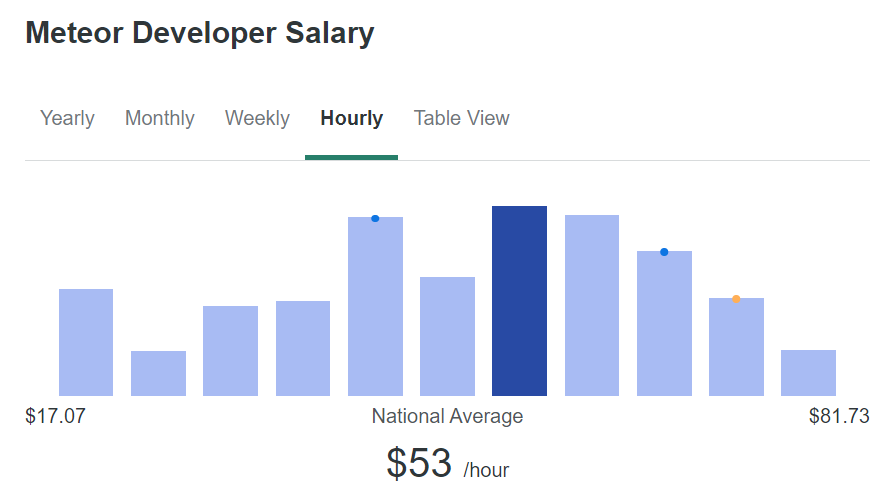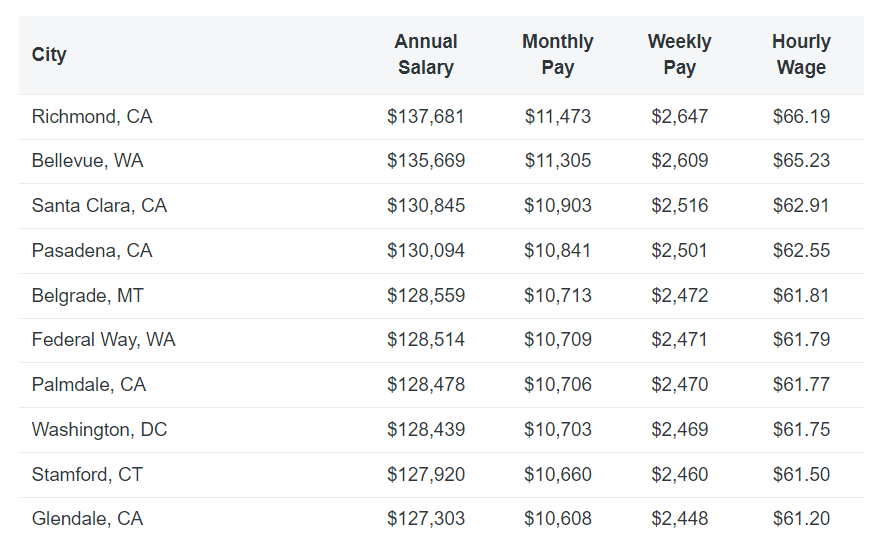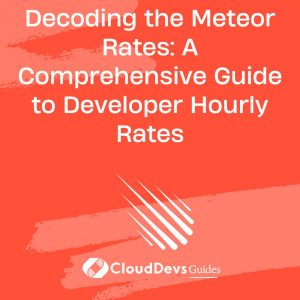Decoding the Meteor Rates: A Comprehensive Guide to Developer Hourly Rates
In the United States, the average hourly pay for a Meteor Developer stands at $50.40. A closer look at the distribution reveals that while the bottom 25% earn around $38.22 an hour, those in the top 25% make upwards of $61.06 per hour. This highlights a substantial wage variation for Meteor Developers across the country.
Table of Contents
It is important to be aware of the current rates for the skill before you start to hire Meteor developers for your project. Whether you’re a seasoned Meteor developer or new to the field, or if you’re a business looking to leverage Meteor for your projects, this guide will offer valuable insights into the financial aspects of working with this modern web development platform.
Breaking Down the Average Meteor Developer Hourly Rates (USD)
When comparing junior developer salary estimates across ZipRecruiter, Glassdoor, and Salary.com, ZipRecruiter tends to provide the lowest figures, while Salary.com offers the highest. For mid-level developers, there’s a closer alignment between Glassdoor and Salary.com, both of which suggest slightly higher rates than ZipRecruiter. Among senior developer estimates, Glassdoor stands out with the highest values, whereas Salary.com and ZipRecruiter are more closely matched, with ZipRecruiter being the most conservative in this category.

Navigating Meteor Developer Hourly Rates by Region
| Region | Average Hourly Rate (USD) |
|---|---|
| North America | $45 - $65 |
| South America | $20 - $45 |
| Western Europe | $35 - $55 |
| Eastern Europe | $20 - $40 |
| Australia | $40 - $60 |
| Asia | $15 - $35 |
| Africa | $10 - $30 |
North America presents the highest hourly rates for Meteor Developers. Australia and Western Europe follow suit with competitive pay, though slightly lower than North America. Eastern Europe and South America offer moderate rates, making them attractive outsourcing regions. Asia and Africa have the lowest hourly rates, but this doesn’t necessarily reflect the quality of developers; it’s more indicative of the broader economic landscape and cost of living in those regions.
According to ZipRecruiter, the analysis reveals 10 cities where the average hourly rate for a Meteor Developer exceeds the national average. Leading the pack is Richmond, CA, followed closely by Bellevue, WA, and Federal Way, WA. This data indicates that Meteor Developers could greatly benefit from relocating to these cities. With salaries in these 10 locations notably higher than the national average, opportunities for financial growth in this profession are particularly promising.

Meteor vs. The JavaScript: Comparing Developer Hourly Rates
Here’s a list of hourly rates for developers proficient in various JavaScript frameworks based on market demand, technology maturity, and the complexity of each framework.
| JavaScript Framework | Average Hourly Rate (USD) |
|---|---|
| ReactJS | $50 - $90 |
| AngularJS | $45 - $85 |
| Vue.js | $40 - $80 |
| Ember.js | $35 - $75 |
| Svelte | $40 - $75 |
| Backbone.js | $35 - $70 |
| Node.js | $45 - $85 |
| Next.js | $50 - $85 |
| Express.js | $40 - $80 |
| Gatsby | $40 - $70 |
ReactJS, with its widespread adoption and versatility, tends to fetch slightly higher hourly rates, followed closely by AngularJS and Node.js. Frameworks like Vue.js, Ember.js, and Meteor fall into a similar bracket, reflecting their demand and the skill sets required. Svelte, Gatsby, and Backbone.js tend to be on the lower end, though this isn’t a commentary on their capabilities but rather their niche adoption or the age of the technology. Next.js and Express.js rates reflect the growing trend of server-side rendering and the server-side capabilities of JavaScript, respectively.
Stacking Up Meteor: How Its Hourly Rates Compare in the Full Stack Web Development Arena
Here’s an estimated list of hourly rates for developers proficient in various Full Stack Web Development frameworks.
| Web Development Framework | Average Hourly Rate (USD) |
|---|---|
| Yii | $35 - $70 |
| Ruby on Rails | $50 - $90 |
| Symfony | $40 - $80 |
| Django | $45 - $85 |
| Laravel | $35 - $75 |
| CakePHP | $30 - $70 |
| Flask | $40 - $80 |
| ASP.NET | $50 - $90 |
Ruby on Rails and ASP.NET stand out with higher hourly rates, reflecting their strong capabilities and the high demand for these technologies. Django, Meteor, and Symfony follow with competitive rates, aligning with the demand and complexity of their frameworks. Yii, Laravel, Flask, and CakePHP have more moderate rates, which can be influenced by the age of the technology, market saturation, or niche adoption. The range of rates emphasizes the importance of choosing a framework that aligns with project needs and the available developer expertise.
Conclusion
This blog post offers a comprehensive look at the earning potential for developers specializing in the Meteor framework. It highlights the hourly rates, which are influenced by factors such as experience, geographic location, and project complexity. This guide is a valuable resource for Meteor developers seeking to understand their market value and for employers who wish to hire skilled professionals in this area. Overall, it sheds light on the competitive and dynamic nature of pricing in the field of Meteor development, reflecting the framework’s relevance and demand in the current tech landscape.
You can check out our Meteor Developer Annual Salary Guide to learn about the annual salary rates you can earn in the US and across the world. We bring you a complete Meteor Developer Hiring Guide along with the Meteor Developer Job Description and Meteor Interview Questions guide which will help you in the process of hiring a Meteor developer in 2023.
Table of Contents








